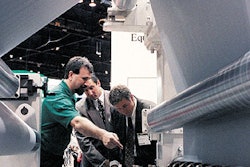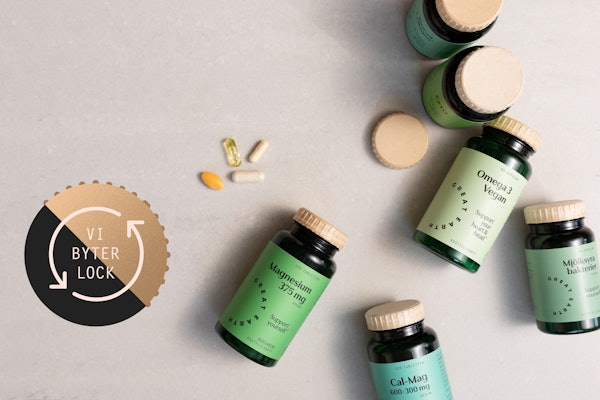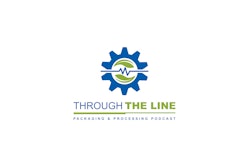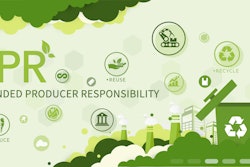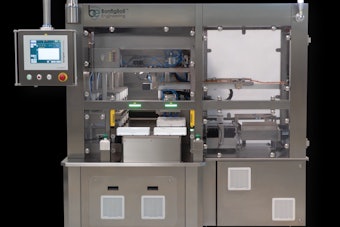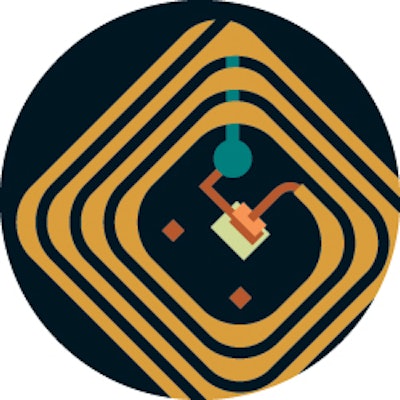
RFID is a major concern for McKesson. With $90 million in annual revenues, it moves three to four million "eaches" on a nightly basis. The distributor began its foray into RFID before joining Project Jumpstart , then Project OnTrack, which involved Pfizer's Viagra.
Ron Bone, senior vp distribution support, McKesson Corp., was one of the panelists. The panel moderator was Michael Liard, research director, RFID and Contactless, ABI Research, who has followed the market for seven years.
Pfizer, involved in RFID since 2004, began shipping Viagra in HF (item) and UHF (case) with a 2-D barcode as backup in December 2005, according to panelist Peggy Staver, Pfizer Pharmaceuticals' director of product trade integrity. The pilot was subsequently extended to Celebrex. She noted that pharmaceutical companies were working internally on serialization development. Staver suggested that companies conduct a risk assessment to determine where to initially apply RFID. She also raised two key questions for them to ask: What are resource requirements? What are the financial requirements?
Overall, McKesson's Bone characterizes RFID as [making] slow progress due to early challenges. "Try to [implement] RFID without changing your business process," he suggests. "There's a lot to be learned in implementation, and it's a good thing companies are sharing learnings from challenges. We need to share our experiences with all facets in the real world." He also asked aloud if there is to be a new Federal mandate relating to RFID.
Panelist Heather Zenk, director, integrated solutions, Amerisource Bergen Corp., reminded attendees that the pharmaceutical supply chain is complex. In addition to manufacturers and wholesalers, its supply chain also includes hospitals, clinics, and independent pharmacies. Zenk noted that Amerisource Bergen handles HF frequency at the item level, and UHF at the case level. Its implementation extends from the manufacturer to pharmacies and hospitals.
The fourth panelist was Leslie Hand, director, Global RFID strategy, Ahold USA. Ahold is a grocery chain with stores primarily throughout the Northeast U.S., that operates 628 pharmacies domestically. Hand said that Ahold was struggling with RFID implementation as it added stores, primarily due to the lack of volume of RFID-tagged product. It is using technology for HF, UHF, and serialized 2-D bar code. She confessed that Ahold was in a quandary of knowing where to go next, with no clear roadmap of what to do. Amid that background, her dilemma: "We can't afford to invest in the wrong hardware for the long run."
Ahold's first pilots were for pharmaceutical products. "We looked for efficiencies within our walls and with trading partners, " says Hand. "We also looked for interoperability." Ahold's RFID test went from distribution centers to stores, she said.
Regulatory issues
Moderator Liard asked about regulatory compliance. "Without standards, this is chaos," responded Bone from McKesson, in speaking for the panel.
Pfizer's Staver spoke up, and noted that it was more than just having standards in place. "What if we ship product that is good in every regard other than the EPC number?" she asked rhetorically. "Is that a recall situation?"
Amerisource Bergen's Zenk had a similar question regarding inference: "What if one product isn't read in a 48-count case? Can it be inferred that it is in there? Or what do we do?"
Ahold's Hand pointed out that the pedigree process breaks down if we all aren't standardized. And it also breaks down once a case is broken down. "At that point, we lose the integrity to track and trace it."
Well into the discussion, Liard offered that a takewaway from what he'd heard from the panel was that there were new opportunities to leverage RFID data. However, McKesson's Bone noted that the pedigree messaging standard of June 2007 in Florida doesn't yield data. In California, the pedigree uses track and trace, but there's no standard currently in place, though that's expected in 2008. However, there was agreement that a pedigree can help in recalls and returns.
"[We need] to have a pedigree and gain business value from it," said Bone.
Additional issues
Another topic was the continued mix of bar codes and RFID. Pfizer's Staver feels there will continue to be a mix of both, especially for consistency of companies distributing products into the United States. "And maybe we'll see linear [one-dimensional] bar codes as well," she added.
Bone says "it's very clear we'll see both bar codes and RFID, plus linear bar codes on cases. The industry is working on ways to get 'translation' between those technologies."
In the ongoing debate between HF versus UHF, McKesson's Bone sees a clearer path than most: "What we're hearing and seeing is that it's going to be UHF."
Referring to the change in wholesale distribution to the trusted sources approach, Bone also noted that the supply chain is "far more safer today than it was three years ago." He also suggested that the approach should be extended all the way to consumers: "To know what you're buying and who you're buying it from." He concluded by emphasizing the importance of how the industry manages consumer messaging about presenting and handling RFID information.
In responding to a question about the cold chain, Bone responded that "there's a great opportunity in radio frequency for sensing. Long-term, we see sensors [delivering] a great return on investment in this technology."
Amerisource Bergen's Zenk also noted that a number of products, such as biologics, may not be safe for RFID, and will likely start with a 2-D bar code for serialization before migrating to RFID.
McKesson's Bone is sympathetic to the plight of small companies that don't have the resources for implementing RFID and are not in touch with what's happening in RFID. "We need Webinars and workshops regarding what is required," he emphasized.
"We'd like to find solutions that work for all of us," summarized Hand from Ahold USA. "[Companies] need to play a part now. The more voices that are heard, the better." [HCP]
--By Rick Lingle, Technical and RFID Editor, Packaging World



